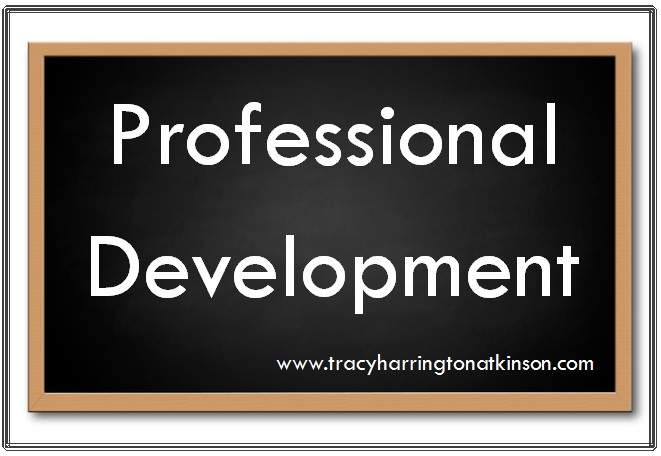
Professional development is essential in all professions, especially teaching.
“Joyce and Showers (with Barrie Bennett, 1995) reported that the levels of transfer increase based on the type of learning experiences and training in which people are involved” (Gregory, 2008, p 8). Presentation of theory, modeling, practice/low-risk feedback and coaching/study teams/peer visits were among the different training and learning experiences evaluated in their study. Among these options, coaching/study teams/peer visits were more effective than the other various options. In awareness and concept understanding, this method increased understanding by a minimum of 5% but in application and problem solving, knowledge was increased by 75% to 85% over the other options.
Gregory (2008) explains “sharing, problem solving, and collaborative supports are essential to facilitating implementation and transfer into the classroom and into a teacher’s repertoire” (p 8). Rahn & Moraga (2010) substantiate this research through a study of graduate level engineering students. Students were divided into different groups and given different types of instruction. One group received the traditional lecture reticent of many universities while another group participated in an active learning environment, including task performance. Rahn & Moraga concluded that performance and active participation in the learning process do provide greater results on traditional tests and application to real world situations.
This research is essential for every educator from preschool to graduate level coursework. Educators must keep in mind the nature of Bloom’s taxonomy associated with cognitive, affective and psychomotor skills (Clark, 2010). Bloom stressed “the learner should have acquired new skills, knowledge, and/or attitudes” (p 1). This result is possible through a continual application and hands on experience associated within the learning experiences emphasized by Joyce and Showers.
The purpose, goal and direction of every educator ought to be the encouragement of lifelong learning (Partners in Learning, 2007). This is achieved through the example of an educator who implements lifelong learning in their lives through both formal and informal means. Every educator must possess a passion for learning which radiates into the lives and classrooms.
This research is implemented through the execution of professional development from the district level through to the individual classrooms. District effectively coordinates learning opportunities for students, parents, teachers and administrators through the implementation of professional learning communities. In PLCs, educators collaborate in defining problems within the school and individual classrooms. Teachers are encouraged to bring difficulties and successes to the learning environment to be discussed. Small groups are organized where teachers may examine student work and comment. Additionally, new programs and techniques are introduced in this forum.
Another positive implementation of learning environments is the application of peer visits. Teachers are encouraged to travel between classrooms and visit peers to note successes. They are also asked to later offer feedback on what they discovered at these visits during PLCs.
Another option available to teachers is scholarship money offered on a semester basis. Teachers are encouraged to continue their education by applying for scholarship monies offered by the district, school and parent teacher organizations. As money is awarded and used for these programs, teachers are encouraged to bring back their knowledge and share it with their peers, especially during PLCs.
Professional development opportunities vary throughout the educational world but the most effective use of resources are associated with hands on learning experiences. Online universities offer a newer venue of information as professionals can gather within a virtual educational setting to learn and share experiences. These environments can not only be fun and informative but they can be also be flexible and collaborative in nature.
Another option is peer coaching. “Peer coaching is a confidential process through which two or more professional colleagues work together to reflect on current practices; expand, refine, and build new skills; share ideas; teach one another; conduct classroom research; or solve problems in the workplace” (Robbins, 2010, p 1). Peer coaching has many unique applications such as visiting teachers, team teaching, problem solving, video conferencing and study groups.
Professionals on every level of education from administrators to educators need to be aware of the research conducted by Joyce and Showers. Through the implementation of this research, learning environments can be enhanced for teacher development. Each of these component contribute to a positive learning environment for learners.
Sources:
Clark, D. (2010). Bloom’s taxonomy of learning domains. Retrieved from: www.nwlink.com/~donclark/hrd/bloom.html
Gregory, G. (2008). Differentiated instructional strategies in practice: training, implementation, and supervision (2nd ed.). Thousand Oaks, CA: Corwin Press.
Partners in Learning. (2007). Innovative teaching drives students’ lifelong learning. Retrieved from: download.microsoft.com/download/…/Filipina_Teacher_Final.pdf
Rahn, R. & Moraga, R. (2010). The study of knowledge retention and increased learning through the use of performance based tasks. Retrieved from: www.niu.edu/CEET/p20/scholarship/vol2/B13F.pdf
Robbins, P. (2010). How to plan and implement a peer coaching program. Retrieved from: www.ascd.org/publications/books/61191149/chapters/A-Definition-of-Peer-Coaching.aspx
By Tracy Harrington-Atkinson
Tracy Harrington-Atkinson, mother of six, lives in the Midwest with her husband. She is a teacher, having taught elementary school to higher education, holding degrees in elementary education, a master’s in higher education and continued on to a PhD in curriculum design. She has published several titles, including Calais: The Annals of the Hidden, Lemosa: The Annals of the Hidden, Book Two, Rachel’s 8 and Securing Your Tent. She is currently working on a non-fiction text exploring the attributes of self-directed learners: The Five Characteristics of Self-directed Learners.

Comments are closed